
HCIP-Datacom-Advanced Routing & Switching Technology V1.0
Last Update Nov 30, 2025
Total Questions : 156
We are offering FREE H12-831_V1.0 Huawei exam questions. All you do is to just go and sign up. Give your details, prepare H12-831_V1.0 free exam questions and then go for complete pool of HCIP-Datacom-Advanced Routing & Switching Technology V1.0 test questions that will help you more.



On the OSPF network shown in the figure, area 1 is a common area, area 2 is a stub area, and area 3 is an NSSA. R5 imports an external route 10.0.5.5/32. Given this, which of the following routers does not have the route 10.0.5.5/32 in its routing table?
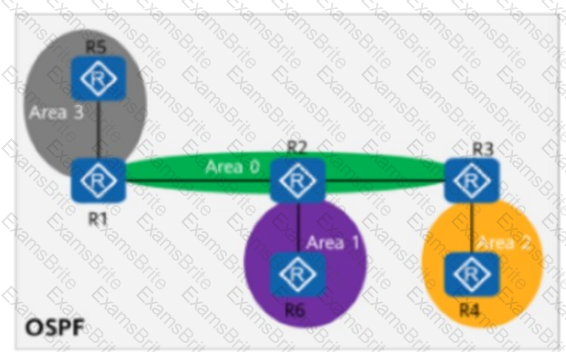
As shown in the figure, an administrator enables port isolation on the switch’s interfaces connected to terminals.
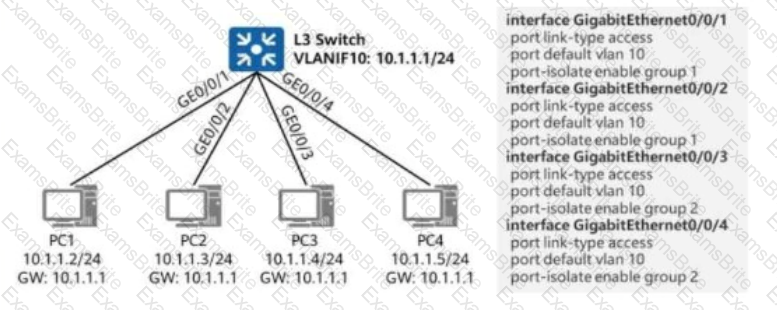
In this scenario, which of the following IP addresses cannot be pinged from PC1?
On the network shown in the figure, the network administrator configures the DHCP snooping trust function on the switch.
GE0/0/2 is a trusted interface (connected to the DHCP Server).
GE0/0/3 is an untrusted interface (potential attacker).
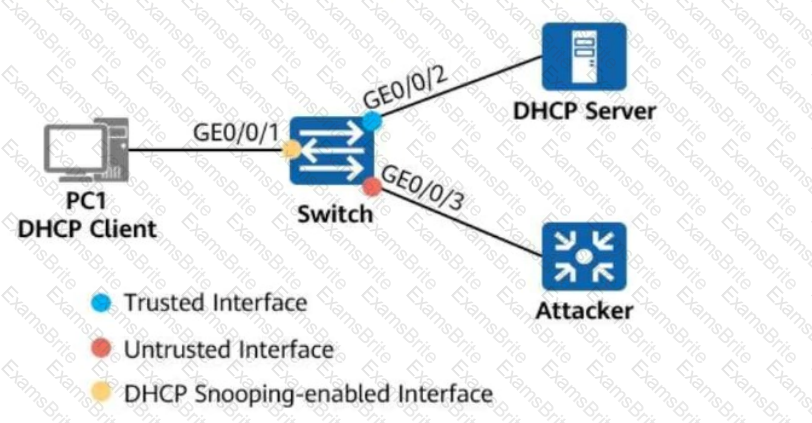
Which of the following statements are true about the two interfaces?
Options:
The router ID of R4 is 10.0.4.4. The LSA shown in the figure is displayed in the LSDB of R4.

Which of the following statements are true about the LSA?
A network engineer provides a troubleshooting report after rectifying a fault. The actual network is simplified into the one shown in the figure, where R1 and R2 both have OSPF enabled, and function as the gateways of PCI and PC2, respectively. Given this, which of the following statements is false?

On the network shown in the figure, OSPF is deployed on R1 and R2. IS-IS is deployed on R2 and R3. To enable R1 to obtain the route to 10.0.3.3/32, ISIS routes are imported into OSPF on R2. In this case, the next hop address to 10.0.3.3/32 in the routing table of R1 is_____.
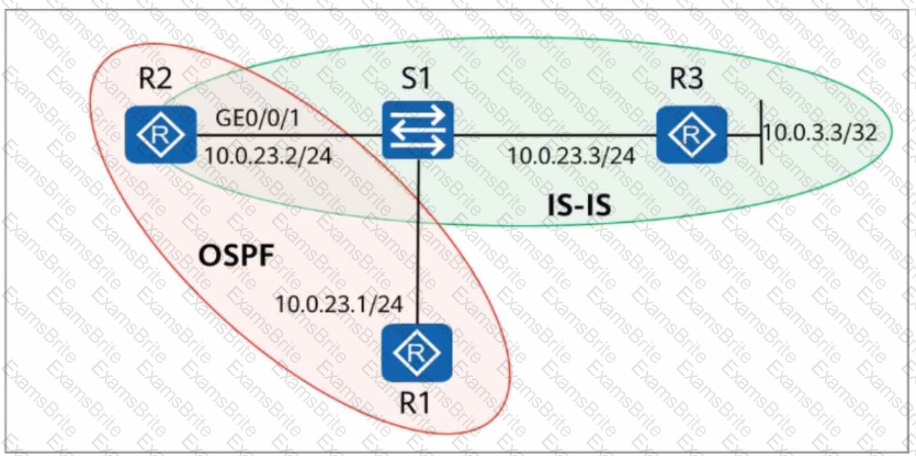
The figure shows the output information on a switch.
Which of the following can be determined from the information?

On the network shown in the figure, IS-IS runs on Rl, R2, R4, and R5, and the area ID is 49.0001. IS-IS runs on R3 and R6, and the area ID is 49.0002. In AS 65000, Ri, R3, R4, and R6 each establish IBGP peer relationships with R2 and R5. R2 and R5 are RRs, and Rl, R4, R3, and R6 are clients. The IBGP peer relationships are established using LoopbackO. The IP address of LoopbackO on each router is 10.0.X.X/32, and the router ID is 10.0.X.X, where X is the number of the router. Rl and R4 import the external route 192.168.1.0/24 to BGP through the import-route command, and R3 and R6 import the external route 192.168.2.0/24 to BGP through the import-route command. Which of the following statements are true?

On the IS-IS IPv6 network shown in the figure, multi-topology is enabled on all routers.
The IPv6 address of Loopback0 on R4 is 2000::4/128.
The command ipv6 summary 2000::/64 level-1-2 is configured in the IS-IS process of R4.
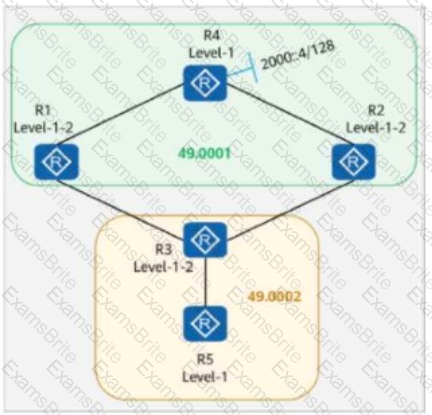
Which of the following statements is false?
On the OSPF network shown in the figure, drag the values on the left to the correct positions so that:
Traffic from PC1 to PC2 follows the path:PC1 -> R1 -> R3 -> R2 -> PC2
Traffic from PC2 to PC1 follows the path:PC2 -> R2 -> R1 -> PC1
Which of the following OSPF cost values should be assigned to Cost-A, Cost-B, and Cost-C to achieve this routing behavior?
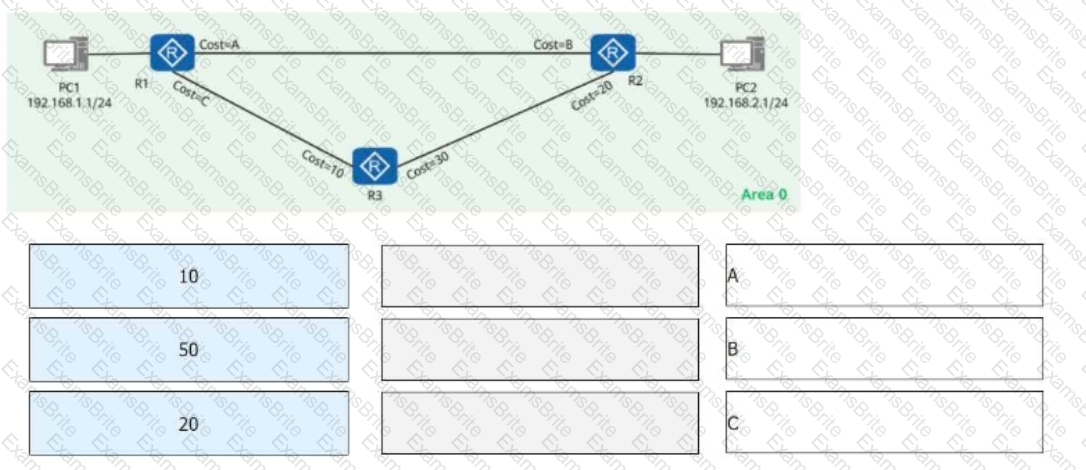
On the ISIS network shown in the figure, R1 imports a default route using the default-route-advertise always level-1 command. In this case, R3 can learn this default route through IS-IS.
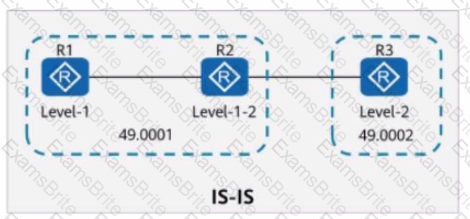
On an enterprise network shown in the figure, if CE2 is dual-homed to PE2 and PE3, a routing loop may occur during the exchange of Type 5 LSAs (External LSAs in OSPF).
To prevent the loop, the route-tag command can be run on PE2 and PE3.
In this way, if the route tag of the route received by PE3 is the same as that configured locally, the route is ignored.

Is this statement True or False?
On the network shown in the figure, IS-IS IPv6 runs on R2, R6, and R3, and the IPv6 address of Loopback0 on R6 is 2000::6/128. OSPFv3 runs on other links. Area 1 is a stub area, and Area 2 is an NSSA. IS-IS routes are imported to OSPFv3 on R2 and R3. Which of the following statements are false?
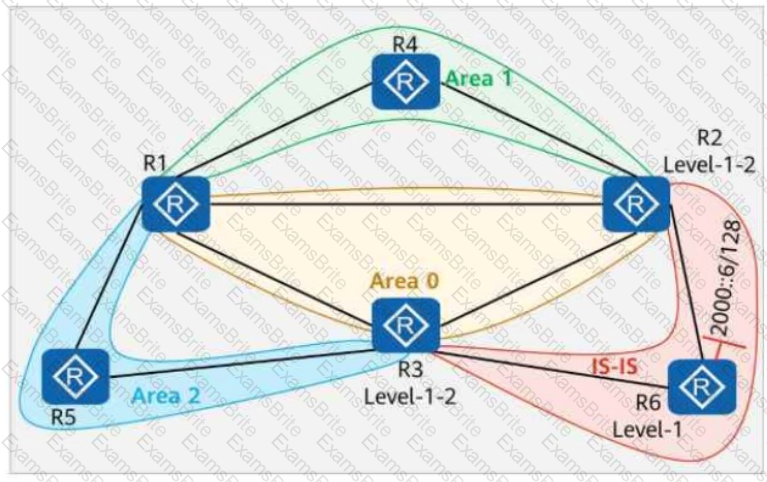
An interface of a switch is in error-down state. A possible cause is that the average rate of broadcast packets received by the interface exceeds the upper threshold set by the administrator for storm control.
The figure shows the logical network architecture of a migration project. The purpose of the migration is to add network device R4 between R2 and R3.
OSPF runs between network devices.
After the physical network is connected, a network engineer incorrectly imports the backup configuration of R3 to R4 during the migration.
Given this, which of the following statements are true?
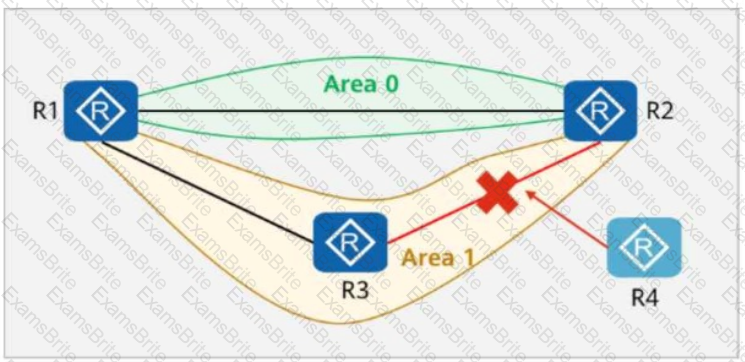
Options:
On the network shown in the figure, EBGP peer relationships are established between ASs through directly connected interfaces.
OSPF is deployed in AS 65456 (with OSPF disabled on interconnected interfaces between ASs).
R4 and R5 use Loopback0 to establish iBGP peer relationships with R6.
The IP address of Loopback0 on each router is 10.0.X.X/32, and the router ID is 10.0.X.X, where X is the number of the router.
R1, R2, and R3 import the external route 192.168.1.0/24 into BGP through the import-route command.
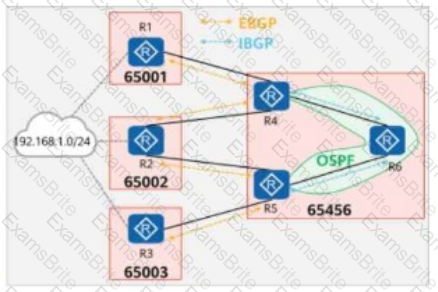
Which of the following statements are true?
On the network shown in the figure, the DHCP server function is enabled on GE0/0/0 of R2, and the address pool is an interface address pool.
When GE0/0/0 and GE0/0/1 of R1 function as DHCP clients, only one interface can obtain an IP address by default.

Options:
On the network shown in the figure, IS-IS runs on R1, R2, R4, and R5, and the area ID is 49.0001. IS-IS runs on R3 and R6, and the area ID is 49.0002. The import-route isis level-2 into level-1 command is configured on R2.
In AS 65000, R1, R3, R4, and R6 each establish iBGP peer relationships with R2 and R5. R2 and R5 are Route Reflectors (RRs), and R1, R4, R3, and R6 are clients.
The iBGP peer relationships are established using Loopback0. The IP address of Loopback0 on each router is 10.0.X.X/32, and the router ID is 10.0.X.X, where X is the number of the router.
R1 and R4 import the external route 192.168.1.0/24 to BGP through the import-route command, and R3 and R6 import the external route 192.168.2.0/24 to BGP through the import-route command.

Which of the following statements are true?
To support the processing and calculation of IPv6 routes, IS-IS adds a new NLPID to TLV 129. The NLPID is an 8-bit field that identifies network layer protocol packets. Which of the following is the NLPID of IPv6?
On an MPLS network, when a transit device receives an MPLS packet and is ready to swap labels, it finds that the label value after swapping is 0. In this case, which of the following operations will the device perform?
Options:
On the network shown in the figure, EBGP peer relationships are established between neighboring routers through directly connected interfaces.
The router ID of each router is 10.0.X.X, and the AS number is 6500X, where X is the number of the router.
Both R1 and R4 have static routes to 192.168.1.0/24, which are imported to BGP through the import-route command.
The aggregate 192.168.1.0/16 detail-suppressed command is configured on R2.
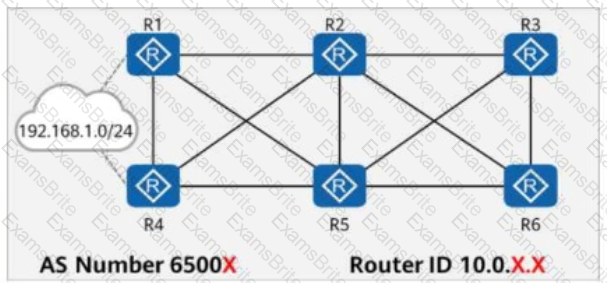
Which of the following is the path for traffic from R3 to 192.168.1.0/24?
On the OSPFv3 network shown in the figure, the LSDB of R2 contains ____ Router-LSAs. (Enter only digits.)

On a broadcast network, routers (including non-DIS routers) of the same level on a network segment can establish neighbor relationships. In the implementation of BFD for IS-IS, however, BFD sessions are established only between a DIS and non-DIS routers, not between non-DIS routers.
The MPLS architecture consists of the control plane and forwarding plane, each of which contains multiple protocols and entries. Which of the following tables is used to forward MPLS labeled packets?
Options:
On the OSPFv3 network shown in the figure, the LSDB (Link-State Database) of R2 contains ______ Router-LSAs. (Enter only digits.)

If the display ospfv3 peer verbose command is run to check OSPFv3 neighbor information, the command output contains information such as the peer router ID, global unicast address of the peer interface, and neighbor status.
On the OSPF network shown in the figure, R1 and R2 are connected through four links. OSPF is enabled on Loopback0 of R2, and the maximum load-balancing 1 command is run in the OSPF process of R1. Which of the following is the outbound interface from R1 to Loopback0 of R2?
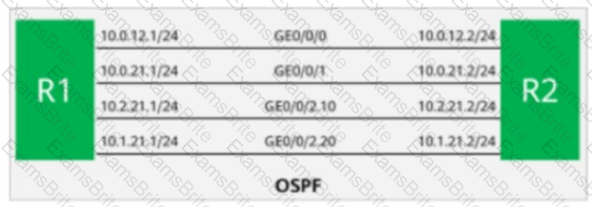
BGP allows you to use the filter-policy acl-number import command to filter received routes. The value of ad-number ranges from 2000 to 3999.
The figure shows information about an LSP (Link-State PDU) generated by an IS-IS router.
From the LSP, you can infer that the router is not the DIS (Designated Intermediate System) of the local link.
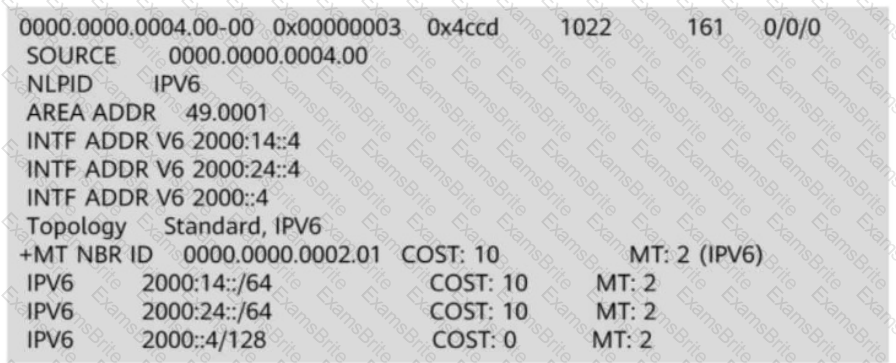
Options:
After basic QinQ is configured on an interface of a switch, the switch adds the default VLAN tag of the interface to packets only when the interface receives tagged packets. In this way, the VLAN space is expanded.
On the network shown in the figure, single-hop BFD is configured on R1 and R2.
A network engineer finds that the BFD session goes down. To locate the fault, the network engineer queries the BFD configurations on R1 and R2.
According to the configuration information marked in the figure, it can be determined that mismatched time parameter settings on R1 and R2 cause the BFD session to go down.

Is this statement TRUE or FALSE?
On the OSPF network shown in the figure, areas 1, 2, and 3 are common areas. The IP address of Loopback0 on R5 is 10.0.5.5/32, and OSPF is enabled on the interface using the network command.
ACL 2000 (with the matching rule shown in the figure) is configured on all routers. If the command filter 2000 import is run in area 0 (where R1, R2, and R3 reside), which of the following routers do not have the route 10.0.5.5/32 in their routing tables?
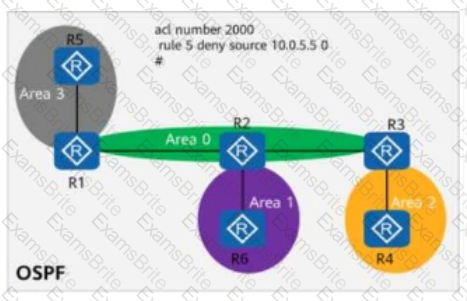
On the OSPFv3 network shown in the figure:
OSPFv3 is enabled on the interfaces connecting R1, R2, and R3.
The router ID of each router is 10.0.X.X, where X is the number of the router.
When checking detailed information about an LSA on R3, the command output shows that the LSA is generated by R2 and describes the IPv6 prefix address associated with the Network-LSA.
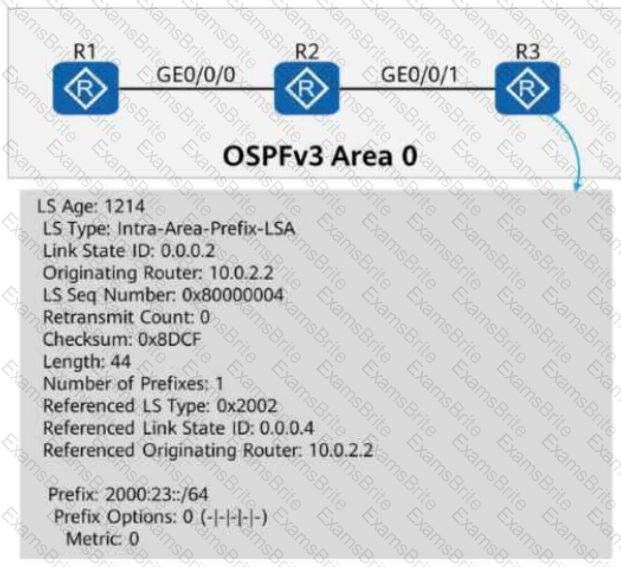
Based on this information, which of the following statements is correct?
There are multiple types of MAC address entries on a switch. Which of the following entries are manually configured and cannot be aged out?
On a BGP/MPLS IP VPN network, which of the following are carried when a PE advertises VPNv4 routes?
On the network shown in the figure, EBGP peer relationships are established between neighboring routers through directly connected interfaces. The router ID of each router is 10.0.X.X, and the AS number is 6500X, where X is the number of the router. Both Rl and R4 have static routes to 192.168.1.0/24, which are imported to BGP through the import-route command. R3 is configured with the peer y.y.y.y as-path-filter 1 import command for all peers. Which of the following sets of commands enables R3 to select the route with the longest AS_Path to 192.168.1.0/24?
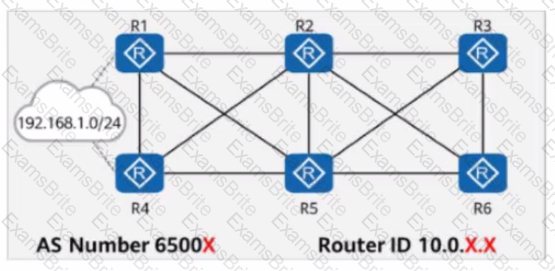
As shown in the figure, R1 to R4 are four routers in AS123. They all run OSPF to implement route reachability within the AS.
Network segments 10.1.1.0/24 and 10.4.4.0/24 are not advertised into OSPF.
R1 and R4 establish an IBGP peer relationship using Loopback0 and advertise network segments 10.1.1.0/24 and 10.4.4.0/24 into BGP.
Which of the following methods can be used to implement communication between PC1 and PC2?
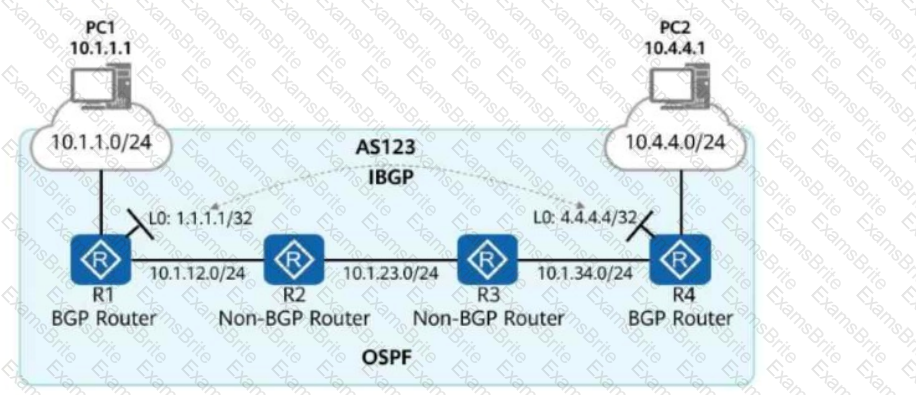
Options:
The path that IP packets pass through on an MPLS network is called a label switched path (LSP). An LSP is a bidirectional path that specifies the transmission direction of data flows.
On the network shown in the figure, the DHCP server function is enabled on GEO/0/0 of R2, and the address pool is an interface address pool. When GEO/0/0 and GEO/0/1 of R1 function as DHCP clients, only one interface can obtain an IP address by default.

OSPF requires that routers in the same area have the same link state database (LSDB). As the number of routes on the network increases, some routers cannot carry so much routing information due to limited system resources. This state is called database overflow. If the Isdb-overflow-limit number 7 command is run on all routers on an OSPF network, which of the following conditions are likely to cause routers to enter the overflow state?
In the hub-spoke networking shown in the figure, the Hub-PE can be configured to allow repetitive local AS numbers for correct route transmission.
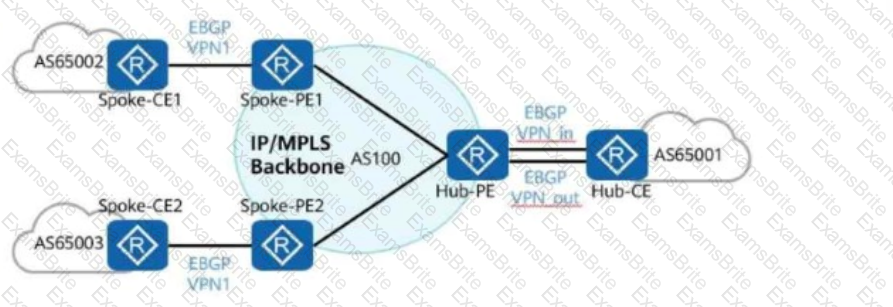
Is this statement TRUE or FALSE?
Options:
BFD for OSPF refers to the association of BFD with OSPF to speed up OSPF's response to network topology changes. The OSPF neighbor relationship can enter the Full state only after the BFD session goes up. The OSPF neighbor relationship can go down only after the BFD session goes down.
On the OSPF network shown in the figure, a network engineer finds that R1 and R2 have the same router ID, and both have imported default routes (with the default-route-advertise always command configured). Given this, which of the following statements is false?
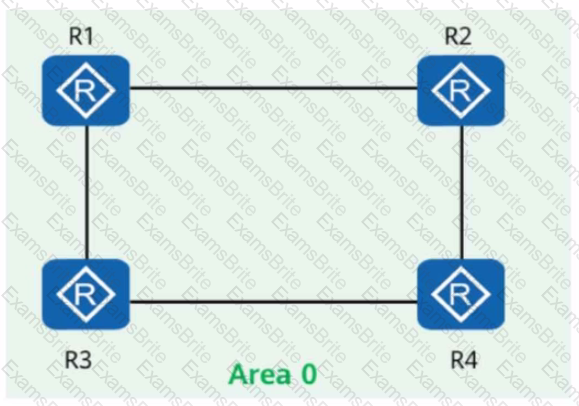
On the IS-IS IPv6 network shown in the figure, after the network becomes stable:
R1 can ping 2000:12::0, and
The display ipv6 neighbors command can be used to display the MAC address corresponding to 2000:12::0.

Is this statement TRUE or FALSE?
In the figure, an administrator needs to enable MPLS LDP on R1 to R4. Which of the following configurations of R1 is correct?

In the figure, the company wants to ensure secure communication between the headquarters and branch, and isolate the R&D areas from non-R&D areas, without changing the current network deployment.
To meet this requirement, an administrator deploys BGP/MPLS IP VPN on the network.
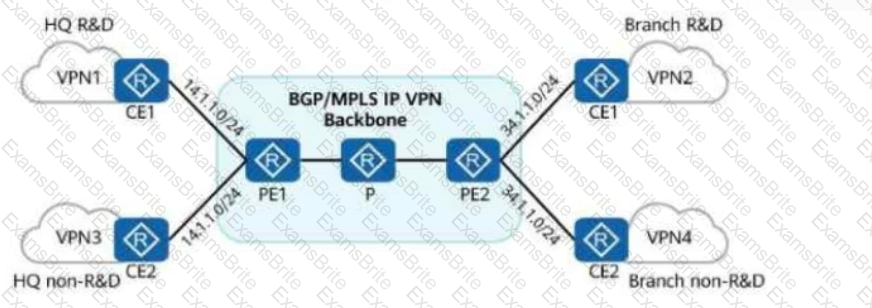
Which of the following statements are true?